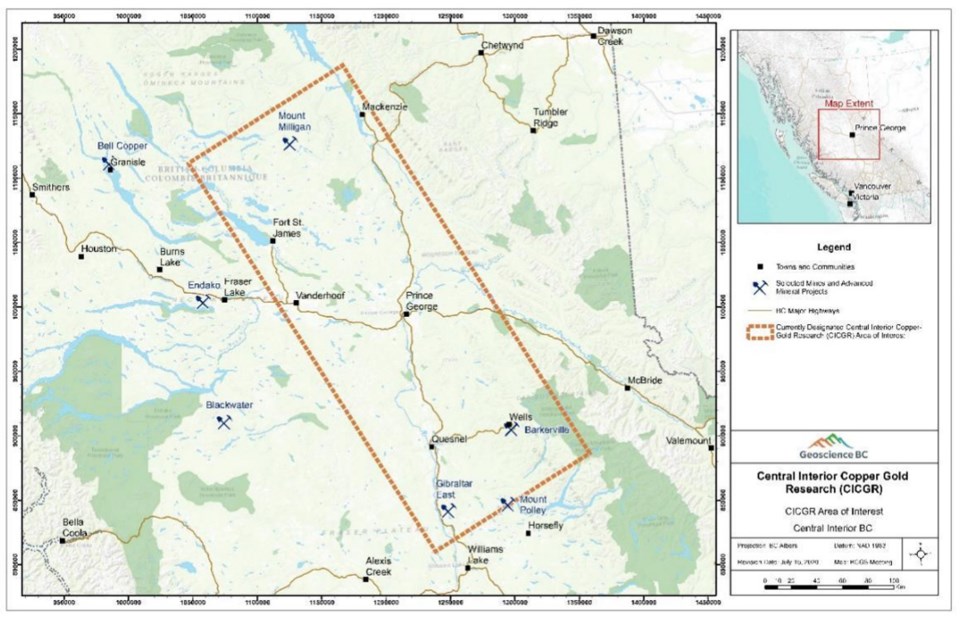On Tuesday, Geoscience BC published the final results of the Central Interior Copper-Gold Research program, aimed at focusing and promoting mineral exploration in the Prince George region.
The multi-year project focused on the area located between the Gibralter, Mount Polley and Mount Milligan mines, a 9,000 sq. km area areas around Fort St James, Mackenzie, Prince George, Quesnel, Vanderhoof and Williams Lake. Multiple studies highlighted the potential mineral deposits in the region, to attract and focus mineral exploration and natural resource management in the region.
"The Central Interior Copper-Gold Research projects play a vital role focusing mineral exploration in B.C.,” Geoscience BC vice president Christa Pellett said. “The new data are central to this research and will support the CICGR goal to improve understanding of surficial geology in central British Columbia."
The final results of the project were released at the Kamloops Exploration Group Conference and Trade Show taking place Tuesday and Wednesday.
“The new data are the final results from Geoscience BC’s Surficial Exploration Project by Noble Exploration Services Ltd. and Palmer… include reanalysis of 661 additional samples recently recovered from storage at BC Geological Survey and Natural Resources Canada facilities,” a statement issued by Geoscience BC said. “These have been added to geochemical reanalysis data released in 2021 to create a dataset containing 3,200 reanalyses.”
The new data will allow scientists and mineral exploration groups see what lies beneath the layer of glacial sediments on the surface.
“This is needed to support industry, governments, communities and Indigenous groups in making more informed decisions,” a statement released by Geoscience BC said. “The data adds to initial reanalysis results and maps published in 2021, 2022 and early 2023.”



